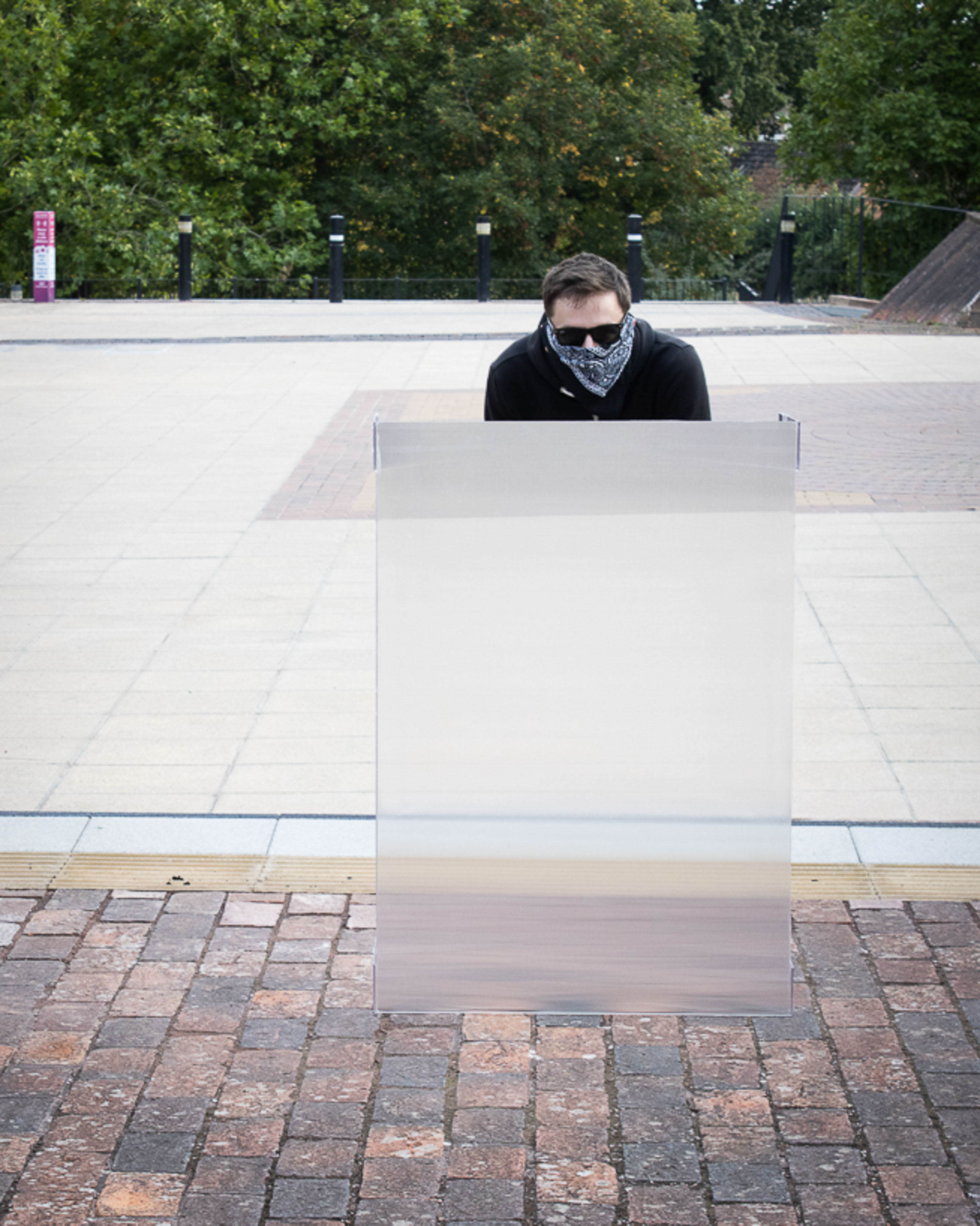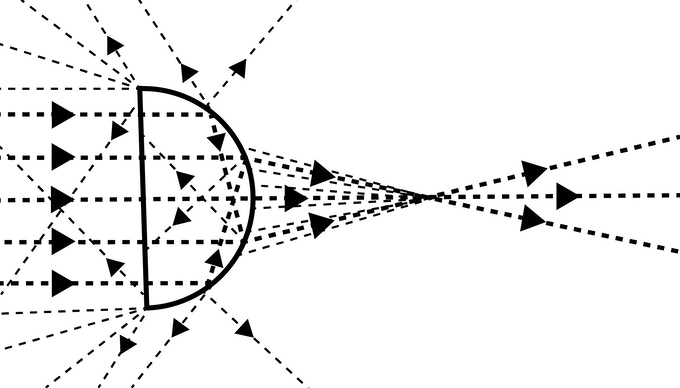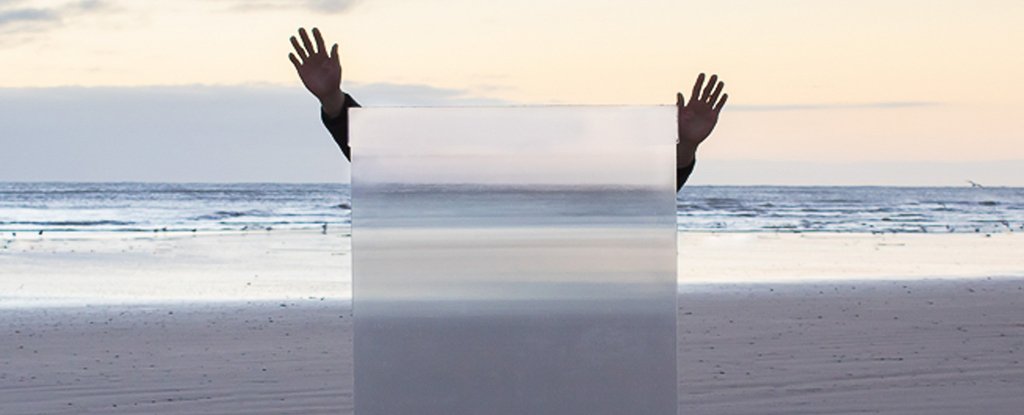Products You May Like
Nearly all of us have wished to be a fly on the wall during a particularly juicy conversation, or disappear into the background after an embarrassing gaffe. It’s not surprising that invisibility cloaks are a mainstay of fantasy fiction.
In recent years, there have been many attempts to devise some sort of invisibility tech. Now, UK-based startup Invisibility Shield Co. has come onto the scene with a new product to help you fulfill that dream of becoming invisible… kind of.
As you can see in the images here, a person standing behind the shield truly does seem to disappear. This happens thanks to a really fun optical phenomenon called lenticular lensing, where a series of thin, cylinder-shaped lenses are arranged parallel on a surface.
There’s one common use for lenticular lensing you’ve likely encountered: in tilt cards which change the picture depending on angle.
 A tilt card. (ScienceAlert)
A tilt card. (ScienceAlert)
Of course, using lenticular lensing will be a little more complicated when we’re talking about an entire invisibility shield, rather that just a postcard, but the basic principles are the same.
“Each shield uses a precision engineered lens array to direct much of the light reflected from the subject away from the observer, sending it sideways across the face of the shield to the left and right,” the startup writes on their Kickstarter for the product.
“Because the lenses in this array are vertically oriented, the vertically oriented strip of light reflected by the standing/crouching subject quickly becomes very diffuse when spread out horizontally on passing through the back of the shield. “
The lenses in this case are very similar to the rows of horizontal bumps on those tilt cards, but instead of light entering and exiting the card at different angles from the front, here light comes from behind the shield.
As it enters the array, light hitting the sides is stretched out to cover the entire surface, making the image behind it blurry. Meanwhile, the more central light from behind the shield, where the ‘disappeared’ object is, is reflected back and out the sides.
The shield is particularly good at maintaining the integrity of horizontal lines, but because the lenses on the shield are vertical, it’s less effective at showing vertical lines behind a person – instead creating a kind of smudge of background light. You can see this in the image below, where tiles disappear as much as the person, while the dark edge of the step appears intact.
 The vertical background elements blur. (Invisibility Shield Co.)
The vertical background elements blur. (Invisibility Shield Co.)
“You can think of it like a waveguide that guides the rays around the object,” University of Adelaide metamaterial physicist Alex Dinovitser told ScienceAlert. In physics, waveguides can be thought of as structures that direct electromagnetic waves into a specific direction. Most commonly these are used in electronics (your microwave has a waveguide, for example), but optical waveguides exist as well.
The principles behind the product Invisibility Shield Co. is pitching on their Kickstarter have actually been around for several years. A 2019 showcase video by military stealth company Hyperstealth quickly inspired crafty folk on YouTube to try and replicate what they saw, with excellent success.
There is even a freely available instruction manual by engineer and YouTuber Ian Charnas on how to craft your own.
 A diagram showing light entering and scattering off a single lens on the shield. (Invisibility Shield Co.)
A diagram showing light entering and scattering off a single lens on the shield. (Invisibility Shield Co.)
Of course, this technology was not invented to just josh with your friends. Hyperstealth was marketed as an aircraft or tank obscuring device. Working in their favor is the fact that lenticular lensing like this works best the farther away you are from the lens. However, just visually cloaking something isn’t particularly helpful for military needs. Depending on what is tracking you, different obscuring devices would be required.
“There are lots of different technologies. For example, [this technology] is not the same as for making a plane invisible to radar,” Dinovitser told ScienceAlert.
“In that case, the surface is designed to completely absorb the radiation or light. For light, the best material for this is VantaBlack. It is not the same as invisibility cloaking where the light goes through and around.”
In all, this shield is just one consumer-oriented product, while ‘invisibility research’ has been happening for the last few decades, resulting in things like an invisibility cloak for sound, for electromagnetic waves, and even for visible light (if only in one color).
We can’t deny that the device sold by Invisibility Shield Co. certainly makes for fun internet content, whether that’s for tricking your dog or messing with your family.
